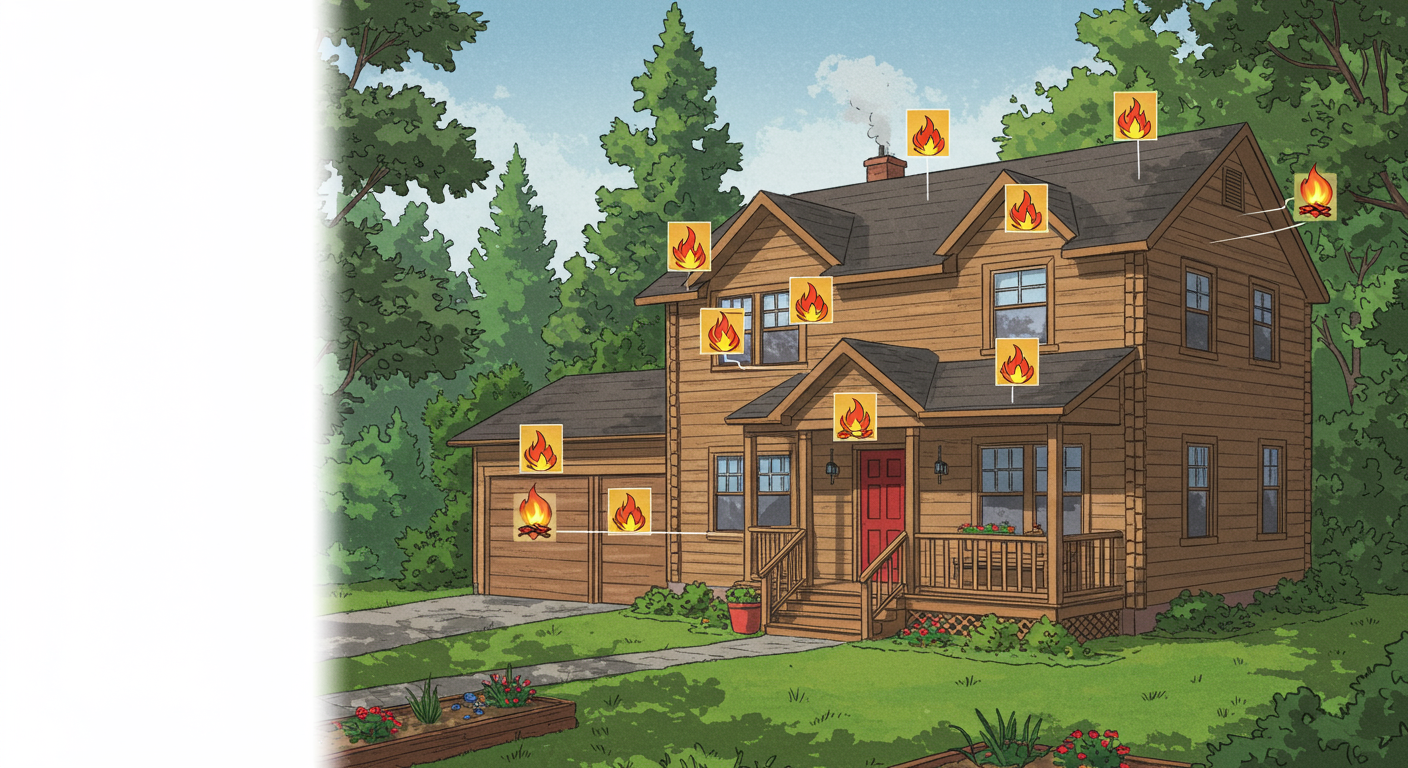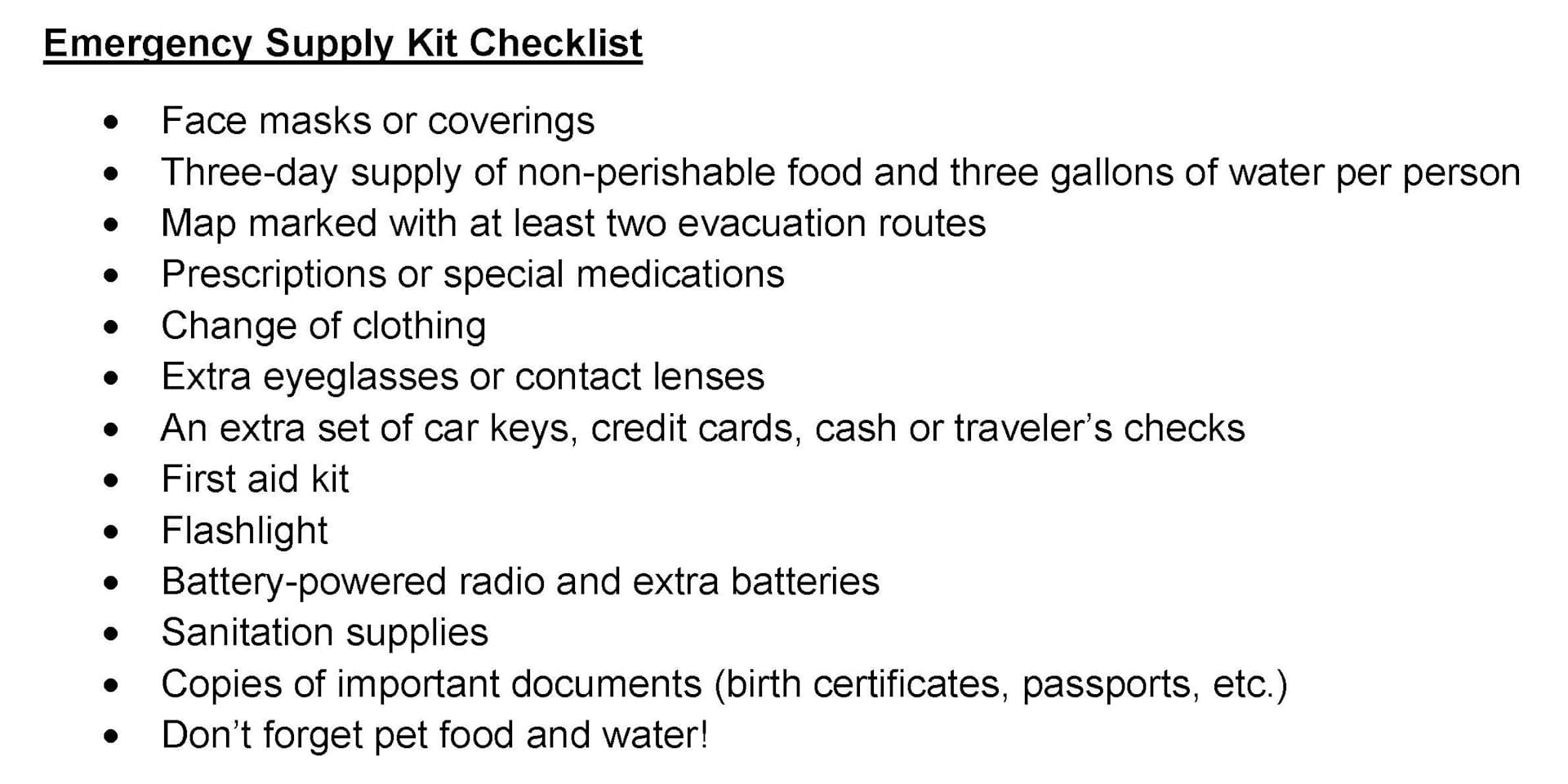Being prepared for natural disasters is a critical part of homeownership. In Colorado, the primary concerns for homes are water, snow, and wildfire. Understanding these dangers and how to best prepare can make a huge difference if faced with one of these catastrophes. John Constan, Community Educator from the Durango Fire Protection District (DFPD), explains from a firefighter’s position how to modify or build your home to be best prepared for fire.
What Is Home Hardening?
Home hardening consists of assessing your property and retrofitting it to be as fire resistant as possible with ignition-resistant materials. The most effective way to protect your home is through both home hardening and creating defensible space around the home and below are recommendations from local fire experts. Some recommendations only include labor while others may take more time and money. Starting with the do-it-yourself tasks still can make a positive impact on protecting your investment.
Embers produced by fire can travel over five miles away, especially with high winds. As fire firefighters are going through neighborhoods in the event of a nearby fire, your home - specifically front door and street address - should be visible from the road so they can easily locate you/your home. A 15 foot wide driveway is ideal for the fire truck to access your home.
Ember Ignition Spots
There are many spots that are vulnerable to ember ignitions on the exterior of your home. This includes chimneys, bushes, items stored under a deck, skylights, roof to wall intersections, and more. A good place to start is where leaves and pine needles pile up. Keeping these areas clear from combustibles is an easy and achievable way to prevent an ignition spot.
Roofs, Eaves, and Gutters
One of the most exposed and vulnerable parts of the home is the roof. Roofs are defined by classes and offer different levels of protection. Class A roofs, the most protective, include concrete tiles, clay tiles, fiberglass asphalt composition shingles, and metal. In comparison, wood shingles is a Class B or C material that is easily flammable. If you are not using Class A material, be sure there is an underlayment to add a layer of protection. Keep the roof and gutters clear of debris including any gaps in metal roofing, whether a Class A material is used or not.
Skylights create an additional debris collection point of roofs and may have plastic which can melt and catch fire. There may also be cracks or gaps in the trim allowing embers to enter the home. Ideally skylights have metal trims and tempered glass to increase the radiant heat resistance. This is similar for chimneys and stovepipes which protrude from the roof line. These should be inspected annually, and have noncombustible screens to prevent embers from entering and metal flashing at the roof intersection points.
Eaves are the part of the roof that extends over the exterior walls of the home. There are open eaves and enclosed eaves and enclosed is the desirable option to keep ignitable debris from collecting. Another problematic area along the roof lines are gutters. They tend to collect leaves and pine needles that can easily ignite. Keeping these clear is a great first step, and adding non combustible covers will minimize the work in the long run.
Siding, Windows, and Doors
The siding on homes acts as the first layer of defense. The material used determines the level of protection it provides. Wood and vinyl are amongst the most combustible, even with fire resistant paint which has a short shelf life. Stucco, steel, and fiber cement are preferred. If resurfacing the entire home isn’t in the budget, adding corrugated metal to the bottom five feet of the siding will make a big difference.
The most vulnerable part of windows is the glass itself. If the glass breaks, it allows embers and flames to enter the home. Replacing old windows with dual-panel, tempered glass will increase resistance to heat exposure by three to four times. Metal framing is preferred as vinyl or wood framing are less fire resistant. Any vents on the exterior of the home that lead into the attic or crawl space are potential spots for embers to enter as well. Metal with one-eighth inch screening is recommended over these access points.
Garage doors, the front door, and other exterior doors can also be a point of entry for embers. Ensuring a good seal between the door and frame will lessen the chances that embers sneak through to the inside. A good way to check for this is to close the door and see if any light seeps through and if it does, it is time to fix or replace the rubber seal.
Decks, Patios, and Landscaping
A good rule of thumb is to keep a minimum of five feet from the home free of combustible materials. This includes, but is not limited to: mulch, shrubs, trees, grass, firewood, wood and plastic furniture, BBQs, and other potentially ignitable material. You can create a noncombustible area with rocks or gravel. This five foot zone extends to patios/decks and it is recommended that underneath the patio or deck should be kept clear and not used for storage or firewood. The deck itself should ideally be made from material such as Trex or another fire resistant material. If it is not feasible to replace the whole deck, the two boards closest to the home should be replaced with fire resistant material in addition to flashing. Keep deck furniture five feet away from the home and minimize combustible materials such as cushions, plastic, and wood. In the case of fire danger and if there is time, removing these smaller flammable items inside your home or 30 feet away will increase the effectiveness.
Fences add privacy and aesthetics, but can also be an ignition point because they stretch beyond the five foot perimeter. They’re commonly made from wood, a very flammable material, which can spread the fire back towards the house. If replacing the entire fence with a non-flammable material such as metal isn’t possible, just the five feet touching the house is a great start. In addition, using the fence as a trellis for plants is not advisable as the plants, bushes, etc. can catch fire and collect more debris and embers.
Local Resources
Go Box
Gathering the essentials to create an emergency supply kit that is easily accessible and ready to go in the case of an emergency evacuation is important to have. The checklist compiled by the DFPD below includes items such as food, water, medications, first aid kit, and important documents. Of course, when there’s extra time to pack up the car, adding in additional supplies such as clothing, photos, electronics, etc. is good as well. If you have pets, don’t forget to bring the supplies needed for them as well! Each member of the household should have their own go bag with a map and plan for rendezvous.
CodeRED
La Plata County offers CodeRED which is commonly referred to as “Reverse 911”. By signing up, you will receive emergency notifications by text, call, and email. You can customize the notifications you receive, however all emergency notifications will push through.
There are many home retrofitting aspects to take into consideration and while it may be too expensive to take on at once, it’s important to focus on the most vulnerable areas first and clear debris from the yard, maintain a five foot radius, and limit flammable furniture and decor. Of course, life comes first followed by property and then environment which is the order firefighters follow. Please let us know any questions you have about home hardening and wildfire safety and we would be happy to connect you with the extensive local resources available.






